Ninety years of Mountain Air
A look back as one of North America's oldest nudist clubs marks a milestone
This weekend, July 11–13, Mountain Air Ranch will celebrate its 90th anniversary with a drone show, live music, and poolside games set against the foothills of the Rockies. Members and guests will gather for catered meals, a kids' carnival, and a group skinny dip marking nine decades of social nudism on the same piece of land in Colorado. A history exhibit in the clubhouse will offer a window into the club’s nearly century-long story.
In covering the milestone, many news outlets have claimed that MAR, which has been operating on the same plot of land since 1935, is the second-oldest nudist resort in North America. It’s a claim that holds water, depending on how you define the terms. Rock Lodge and Sky Farm in New Jersey predate it to 1932, Lake O’ The Woods Club in Indiana has been on the same land since 1933, Maryland Health Society since 1934, and Lupin Lodge in California is certainly in competition with the same founding year as MAR. In fact, Mountain Air Ranch’s qualifier as the second-oldest is that the Colorado Sunshine Club (MAR’s former name) received Charter No. 2 from the American Sunbathing Association (now AANR) in 1937, second to Maryland Health Society.
No matter which way you slice it, MAR is among the five or six oldest American nudist clubs still in operation—no small distinction. In truth, the club is actually 91 years old this year if you count its early, pre-landed phase. The Colorado Sunshine Club began gathering around Denver under various monikers in 1934.1 And why shouldn’t that count? Every lasting movement begins in fragments before it finds its footing.
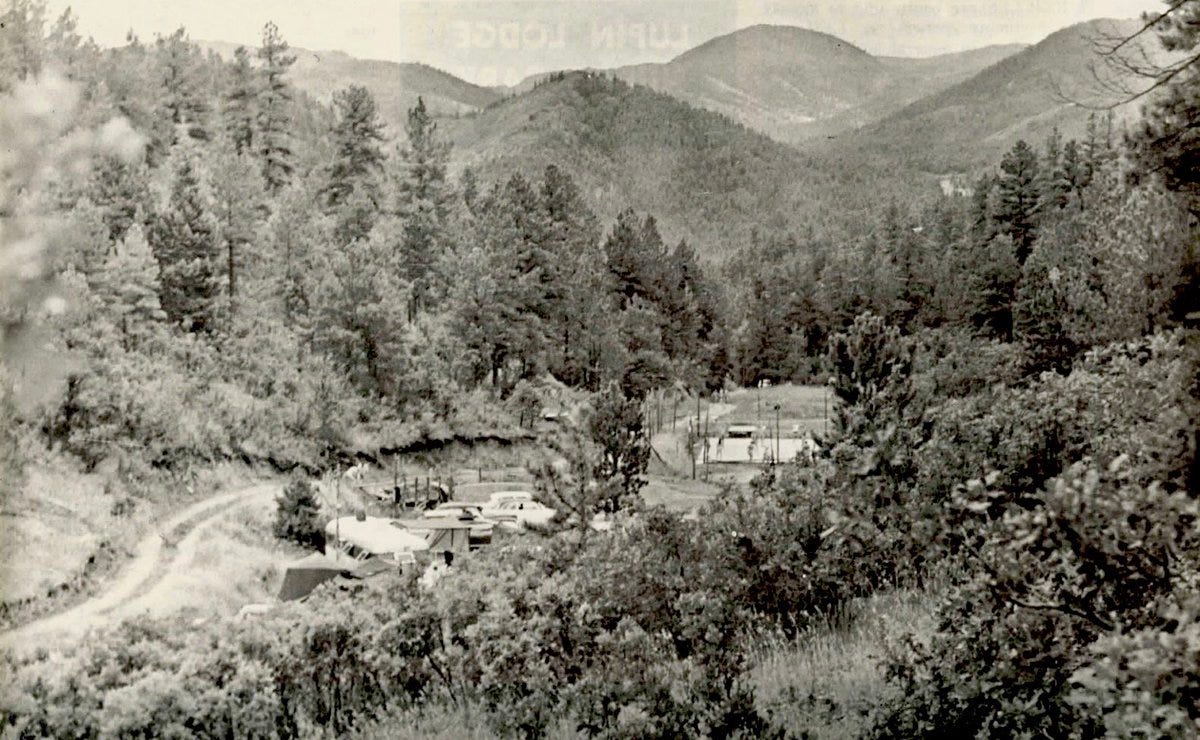
What we have here today, in celebration of this, well, celebration, is a highly abridged history of Mountain Air Ranch. The full history of the club is far too rich to capture in one sitting, but we’ve tried to capture the essence of the story. It’s a story of perseverance, community, and reinvention.
A story that, like many great nudist stories from the era, begins with a police raid.
The early years
In 1935, John and Alice Garrison were arrested along with 27 members of a local nudist group when police raided their Denver home. At the time, the group operated as a non-landed club meeting in members’ houses and rented facilities. Known variously as the Denver Sunshine League, the Mile High Health Club, and the Colorado Artist Club, the group was part of a loose association of nudists affiliated with the International Nudist Conference (INC). The raid resulted in charges of indecent exposure and contributing to the delinquency of minors. Several of those arrested were prominent professionals, including a minister. Most were acquitted, but the Garrisons were convicted and fined.
Rather than give up, they sold their home and used the proceeds to purchase 160 acres of unimproved land southwest of Denver, near Mica Mine Gulch.
There, the Garrisons established a permanent camp, initially under the name Colorado Artist Club. But in 1937, the name was changed to the Colorado Sunshine Club—a more fitting title for its new identity as a landed, family-oriented nudist resort. That same year, the American Sunbathing Association (ASA), which had grown out of the INC, issued the club Charter No. 2.
Members met in a handmade clubhouse, played volleyball on a dirt court, and bathed in a cold metal tank filled with spring water. Alice Garrison became known for the family-style meals she cooked and served every weekend. The club was small and quiet, but it was also among the first of its kind.
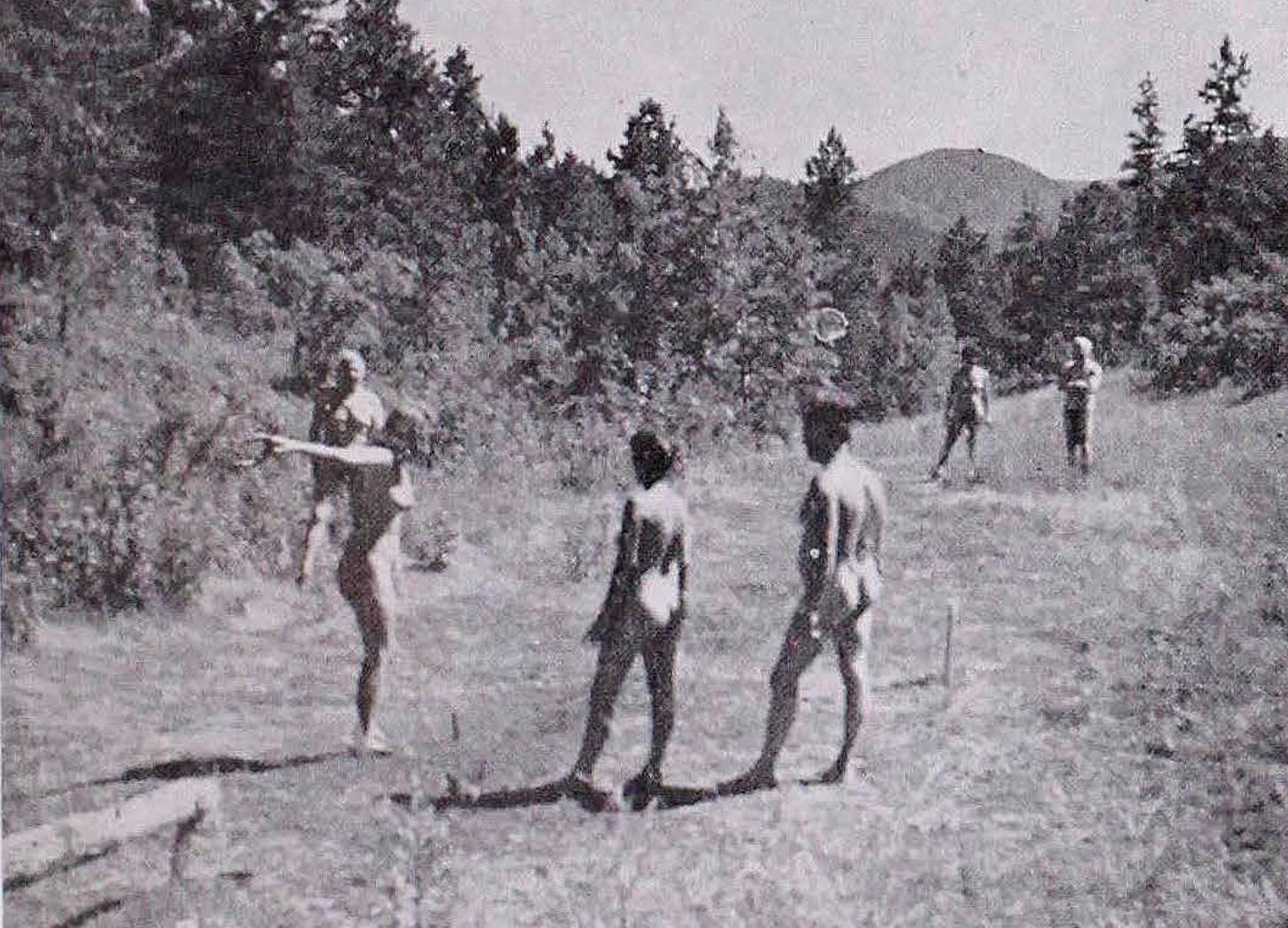
In 1949, the Sunshine Club hosted the ASA national convention. The Garrisons provided food and lodging for over 300 nudists, and John walked through Denver wearing a sandwich board to advertise the event. It made headlines and stirred public outrage. One letter to the editor called it “a pagan exhibition” and “an abnormal state of eccentricity bordering on lunacy.”
Uncomfortable in the spotlight
The club’s national profile continued to grow in the mid-1950s—but not without controversy. In 1954, the burlesque performer Evelyn “Treasure Chest” West attended the ASA national convention as a delegate representing the Colorado Sunshine Club.
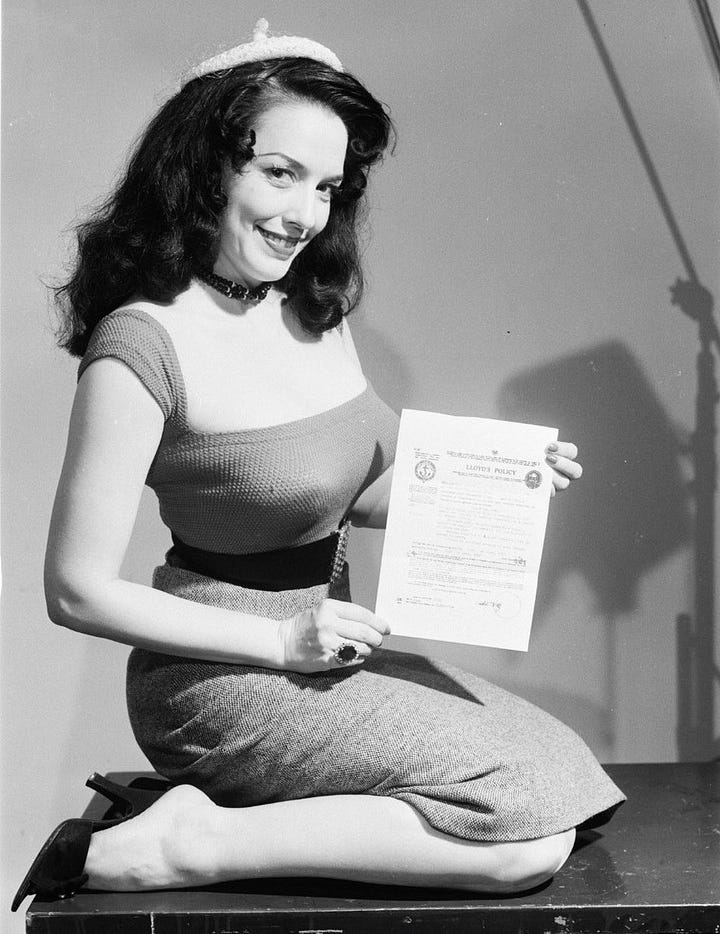

Known for her bawdy humor and self-promotion—she famously insured her breasts for $50,000 and later claimed to have changed her legal name to “Evelyn $50,000 Treasure Chest West”—West drew significant media attention wherever she went. Her propensity for media stunts also drew ire from many nudists, including figures like June Lange, who reportedly circulated petitions to have her removed from the ASA.
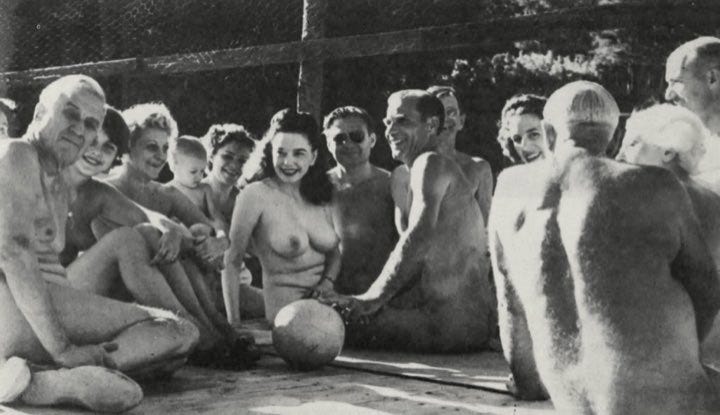
Despite tensions, West remained popular with CSC members. She was a visible presence at the club, posing for photos with founders John and Alice Garrison and appearing in nudist magazines. But her penchant for headlines made many nudist leaders nervous.

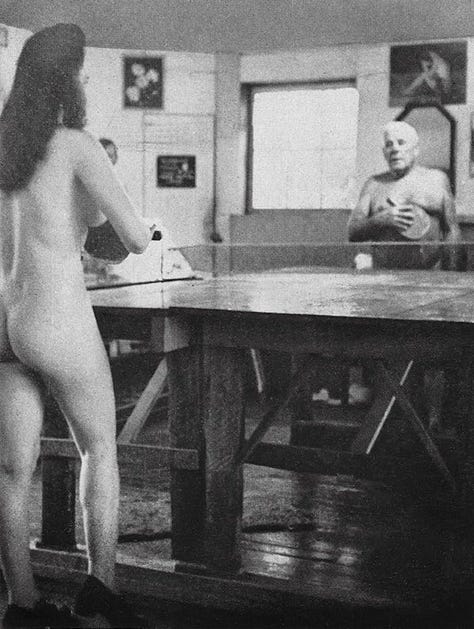

The controversy around West in the nudist community mounted in 1955, when the club hosted a nude wedding for Herb Lindie, director of the Sanantans Club in San Antonio, and Louise West. Evelyn West served as matron of honor. John Garrison was the best man. The wedding, attended by 150 guests, was covered by Modern Sunbathing, local radio, and national press outlets. Celebrities like columnist Earl Wilson and developer William Zeckendorf were reportedly present.

According to A Place in the Sun, John Garrison “gave the bride away as photos were snapped by the press,” while reporters and photographers—some clothed—roamed the grounds. Nudist leaders, concerned by the publicity and West’s professional notoriety, formally reprimanded the Garrisons. West’s ASA membership was revoked shortly after.
Transitions and reconstruction
By the late 1950s, the Colorado Sunshine Club was in financial trouble. As Rick Athearn writes in A Place in the Sun: A History of Mountain Air Ranch, “The Garrisons sold the club in 1958 to six families who had cabins or other interests in the CSC. [...] who then undertook to operate the club as a cooperative venture.”2

The new owners renamed it Mountain Air Ranch. But the six-family ownership proved temporary. In 1961, Colorado Springs businessman Jim Herndon quietly purchased the property—acquiring it secretly so that his name wouldn’t appear in the sale. “He sort of bought it incognito,” MAR historian Hank Koopman told Planet Nude. “They didn’t know they were selling it to him.”
According to longtime member Kathy Watzel, the sale was even more complex than that. “He was a single male and he was gay,” she said. “He offered to purchase it and they flatly refused him. So he got three couples to purchase it for him… and then he bought it through them.” Whether the refusal was due to his bachelor status or his sexuality remains unclear, but the workaround succeeded—and Herndon became the club’s new owner.
Herndon had tried for nearly 30 years to join a nudist club but had always been rejected for being single. When he bought MAR, he finally joined one—by owning it. He moved onto the property and got to work. He built the pool that Garrison had only dreamed of, cleared roads, and transformed the ranch with cabins, a clubhouse, and a new kitchen.

Under Herndon’s leadership, MAR pioneered nude roller skating, nude bowling, and winter swim nights in Denver. The club also expanded its social structure, instituting a committee system that gave members more ownership of its direction.
Challenges, change, and continuity
By the 1970s, MAR was well established, but not without setbacks. A legal dispute over zoning rules required the removal of most trailers from the property. In 1978, a forest fire came dangerously close to the main buildings. Herndon and a team of members used bulldozers to carve fire breaks and stop its advance.
Around this time, MAR appointed its first official managers, Dick and Lyda M.—a pair still remembered decades later by longtime members. “She was very anti-people she didn’t know,” recalled Kathy Watzel, a 30-year member. “She didn’t answer the phone politely. She didn’t want to talk to strangers.” Watzel said that many in the club came to suspect that Lyda was placed at MAR as part of the federal witness protection program, believing her to have been a witness to the Onion Field murders in 1963. That event involved the kidnapping of two Los Angeles police officers and the execution-style killing of one. The incident became a national sensation following Joseph Wambaugh’s bestselling 1973 nonfiction book and its 1979 film adaptation. Whether Lyda was placed at MAR for her own protection or for more mundane reasons remains unverified, but her secretive demeanor and the club’s remote location have kept the speculation alive.
In 1982, Jim Herndon died. A bronze bust by sculptor Ed Dwight was unveiled in his honor and remains on view in the club’s Memorial Garden.

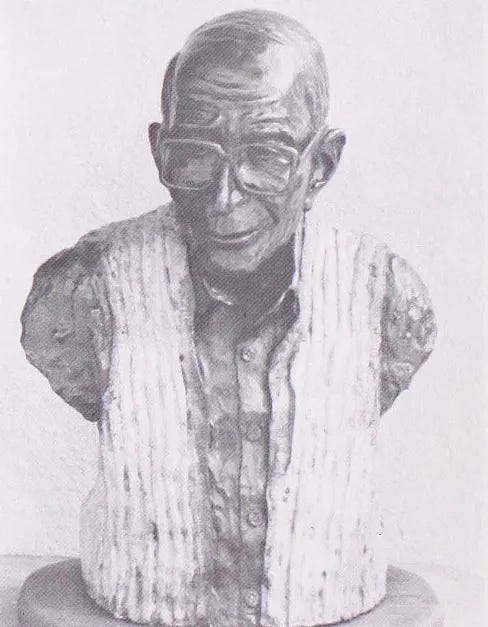
When Herndon died, he ensured the ranch would continue without a private owner: he had placed the property into a corporate trust governed by a nonprofit board. This structure has protected the ranch from private sale and preserved Herndon’s vision. Without it, it’s very likely that Mountain Air Ranch would not be celebrating its 90th anniversary today.
New generations and growth
By the early 1990s, Mountain Air Ranch was experiencing steady growth. The club added rustic cabins, expanded youth programming, and improved overnight accommodations to meet rising demand from families. At the same time, fire preparedness became a growing concern. Volunteers cleared trails, practiced safety drills, and implemented forest stewardship plans to protect the land.
Since the early 2000s, Mountain Air Ranch has operated as a nonprofit social club, formally incorporated under 501(c)(7) tax status.3 Governance is handled by an elected board of directors, including a president, vice president, secretary, and treasurer. Officers serve without pay, and decisions are made collectively through member participation. Annual budgets, capital improvements, and policies are shaped through monthly open meetings and committee work.
In 2010, MAR celebrated its 75th anniversary with ten days of movies, tournaments, dances, and parades. Archival footage was screened beside old newsletters and digitized VHS tapes. A new group photo was added to the dining room wall—a tradition MAR has repeated every five years.4



Over the past fifteen years, MAR has expanded its amenities and programming. New offerings like disc golf, trivia nights, karaoke, and paddle tennis have drawn younger families and diversified the club’s membership. In 2024, members were evacuated during the Quarry Fire, then quickly organized a fundraiser for local firefighters. The club has continued to coordinate wildfire planning and emergency preparedness efforts.5
Today, the ranch remains true to its founding ideals of body acceptance, family-friendly nudism, and member-driven stewardship. Spread across 150 wooded acres, it offers a heated pool, hot tub, sauna, paddle tennis courts, children’s play areas, and over ten miles of private hiking trails.6 The mica mine that existed on the land the Garrisons purchased ninety years ago is still there, a feature the front office is sure to tell visitors interested in hiking to check out. Members and guests stay in lodge rooms, RV sites, or rustic cabins like the Ponderosa, which sleeps four and includes a full kitchen and private patio. Dry camping is also available.7
A celebration for the books
If you’re headed to MAR this weekend for the 90th anniversary celebration, be sure to explore the historical exhibit in the clubhouse, where much of this history can be seen up close. And don’t miss the chance to pick up a copy of A Place in the Sun III: A 90-Year History of Mountain Air Ranch, the newly published history book co-authored by Jeff Brown and Hank Koopman. This expanded edition—presented in two volumes due to its size—is the third major update to the club’s official history, first published in 1985, and contains far more detail than I could include here. Copies will be available for sale during the event, and those unable to attend can contact MAR to purchase by mail (shipping costs may apply).
For those interested in diving even deeper into the club’s early years, the Denver Art Museum holds a collection of hundreds of historical photos from Mountain Air Ranch’s early days. Appointments are required to view the archive in person.
Mountain Air Ranch has survived police raids, zoning disputes, press scandals, and wildfires. Through it all, its members have kept a simple tradition alive, living together without clothes in the fresh Colorado mountain air. 🪐
More early nudist history:
Marsh, Lyle. (1966). Mountain Air Ranch. American Nudist Leader, (144), 14–19.
Athearn, Rick. A Place in the Sun: A History of Mountain Air Ranch. 1985.
IRS Nonprofit Explorer: Mountain Air Ranch Corporation (EIN: 84-1059181)
Watzel, Kathy. “Mountain Air Ranch Celebrates 75 Years.” The Bulletin, vol. 60, no. 1, Jan. 2011.
9News Denver. “Colorado Nudist Resort Hosts Fundraiser for Firefighters After Evacuation.” Aug. 2024. https://www.9news.com/article/news/local/wildfire/colorado-nudist-resort-fundraiser-firefighters-quarry-fire/73-97415f27-fd57-4d23-8c2b-b9f37f55eb17
Official website: https://www.mountainairranch.co
Additional sources:
KDVR. “North America’s Second-Oldest Nudist Resort Is Turning 90.” July 2, 2025. https://kdvr.com/news/local/north-americas-second-oldest-nudist-resort-is-turning-90-and-its-here-in-colorado/
Colorado Community Media. “Mountain Air Ranch Is a Safe Haven for Coloradan Nudists.” Feb. 5, 2019. https://coloradocommunitymedia.com/2019/02/05/mountain-air-ranch-is-a-safe-haven-for-coloradan-nudists/


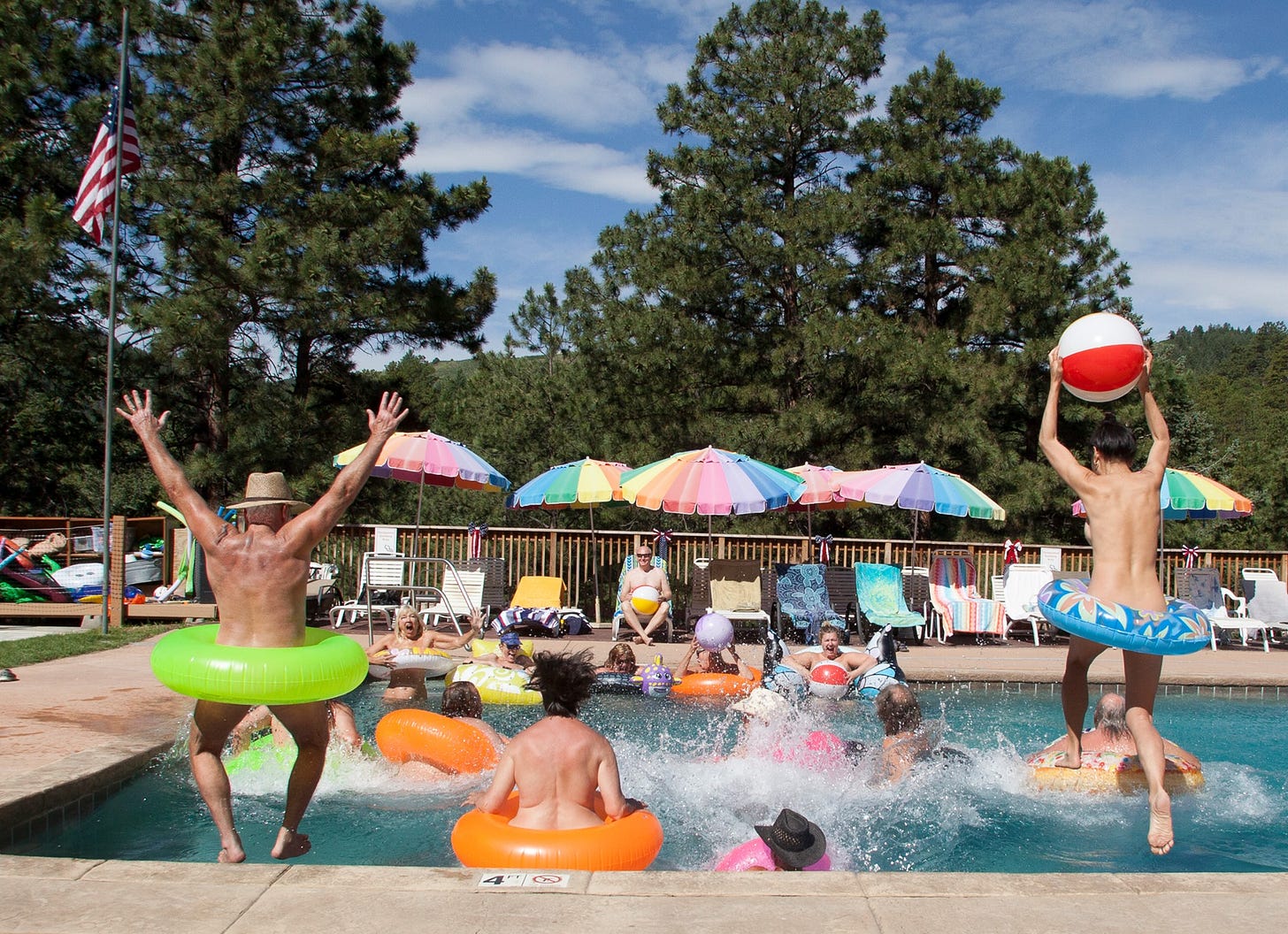
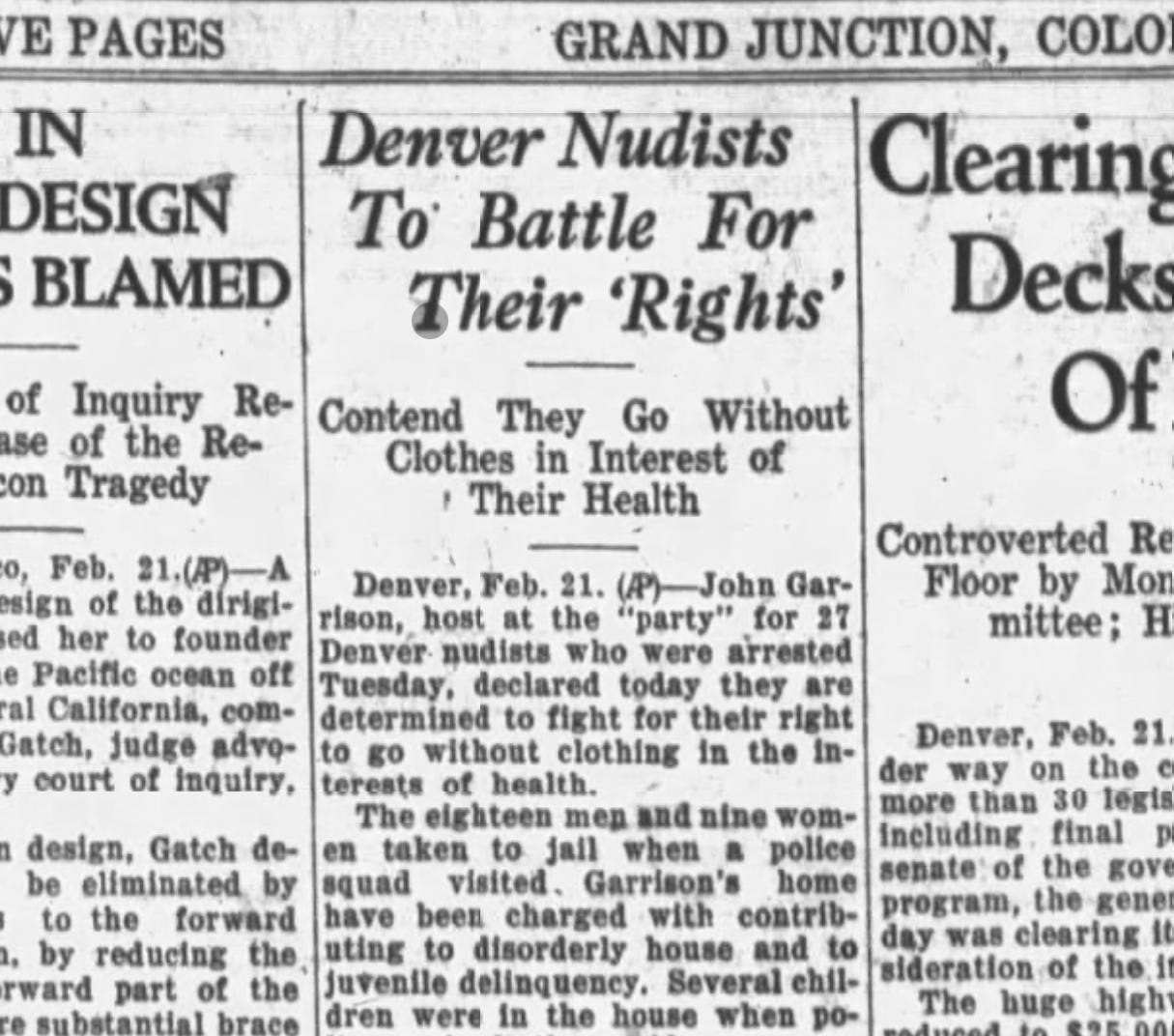

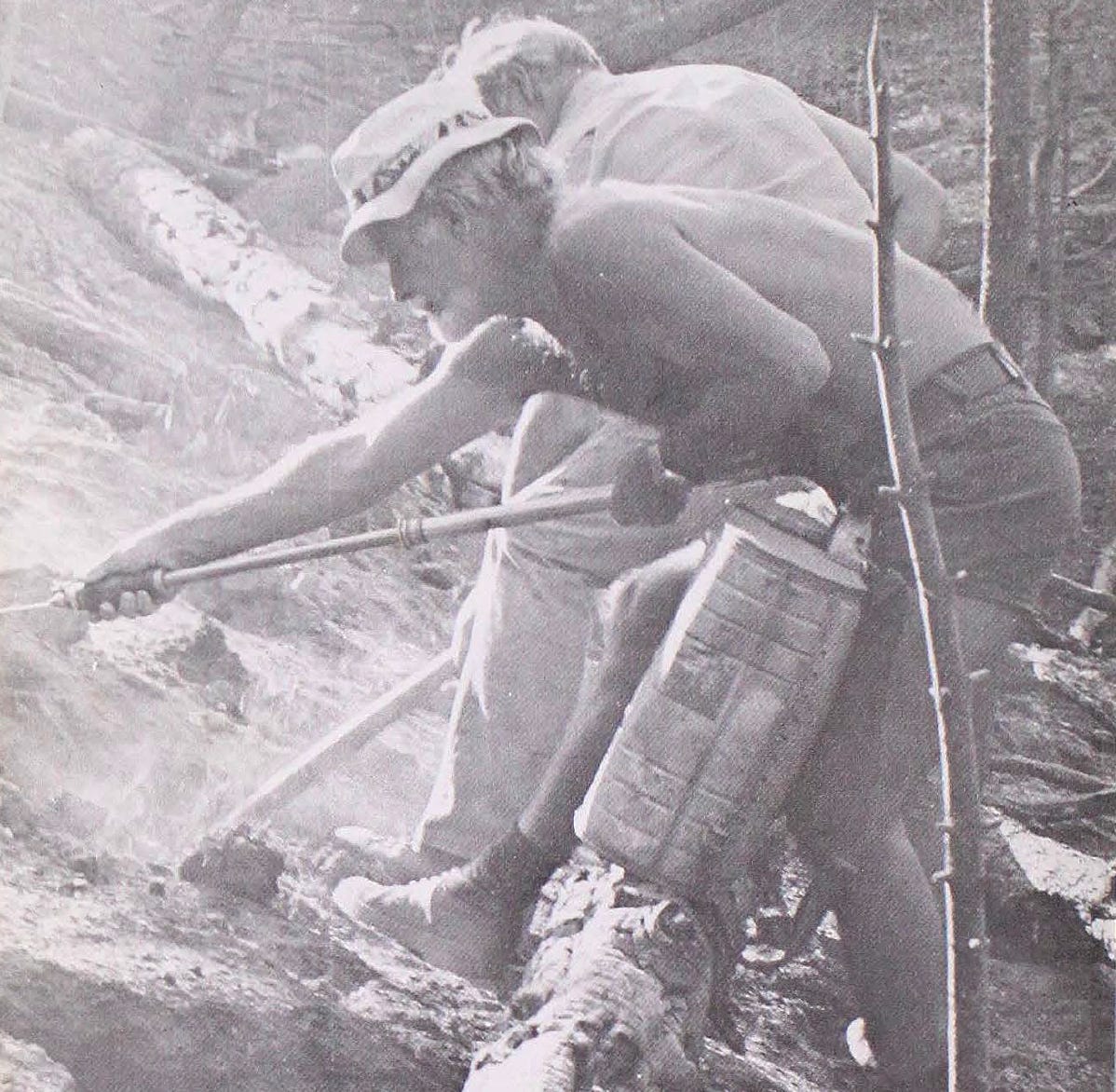


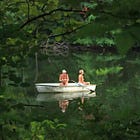
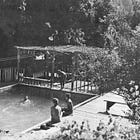
Though my 2021 visit was very brief for an overnight stay when passing through Denver, I was struck by the stunningly gorgeous location of this club, and wondered how on earth they kept it from falling into the hands of developers. Your excellent provided the missing link. And to think that Herndon has to sidestep his way into saving the place in the long run.
Now I’m super eager to get back to explore the trails and visit the mine.
Thanks for this, Evan!
Between MAR, which I've not been to, and Orient Land Trust/Valley View Hot Springs and Star Ranch, which I have been to, I believe either a land trust or member-owned structure is the way to go to protect and preserve such wonderful places. Private ownership has proven to sooner or later result in such places either going textile or being carved up by developers.